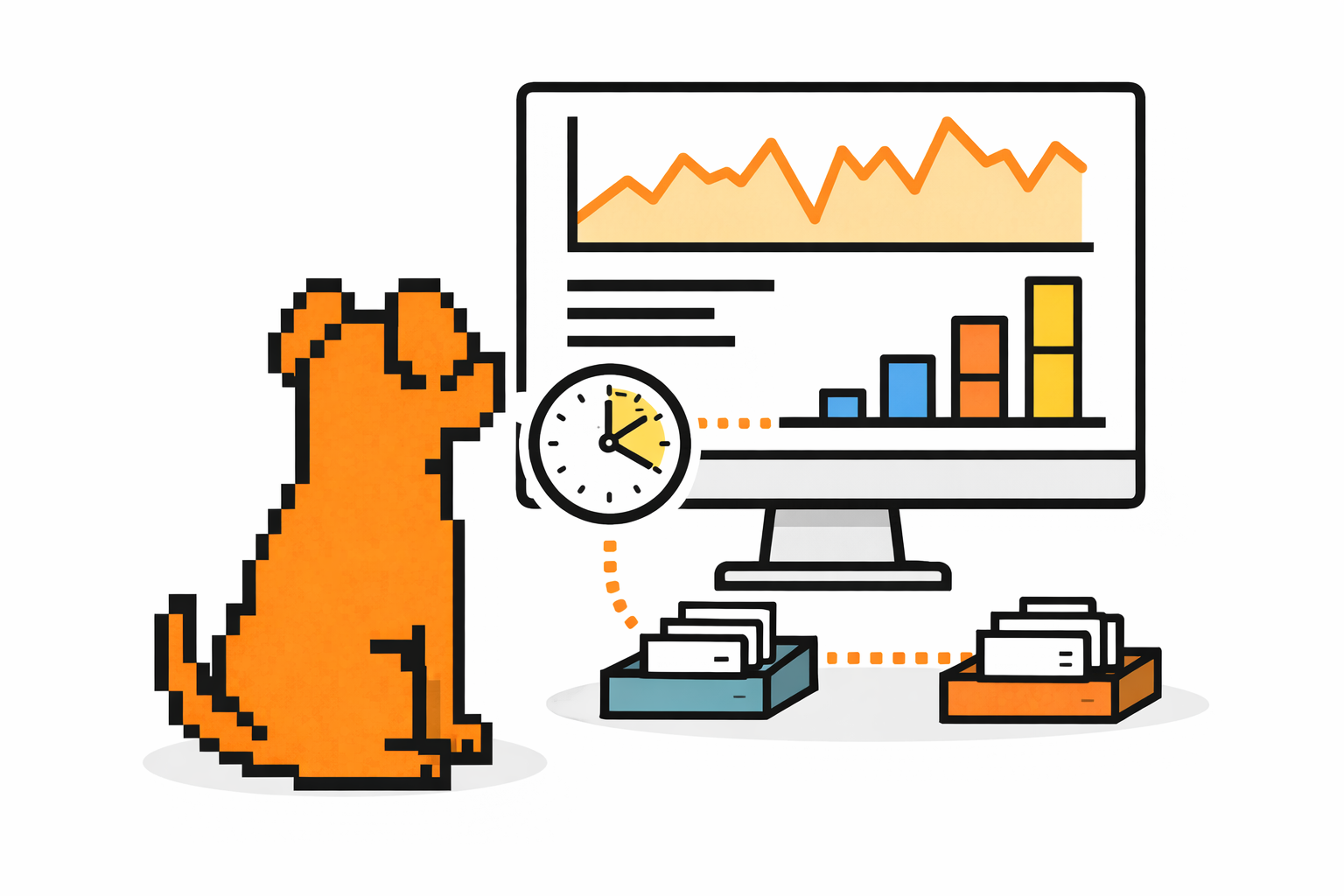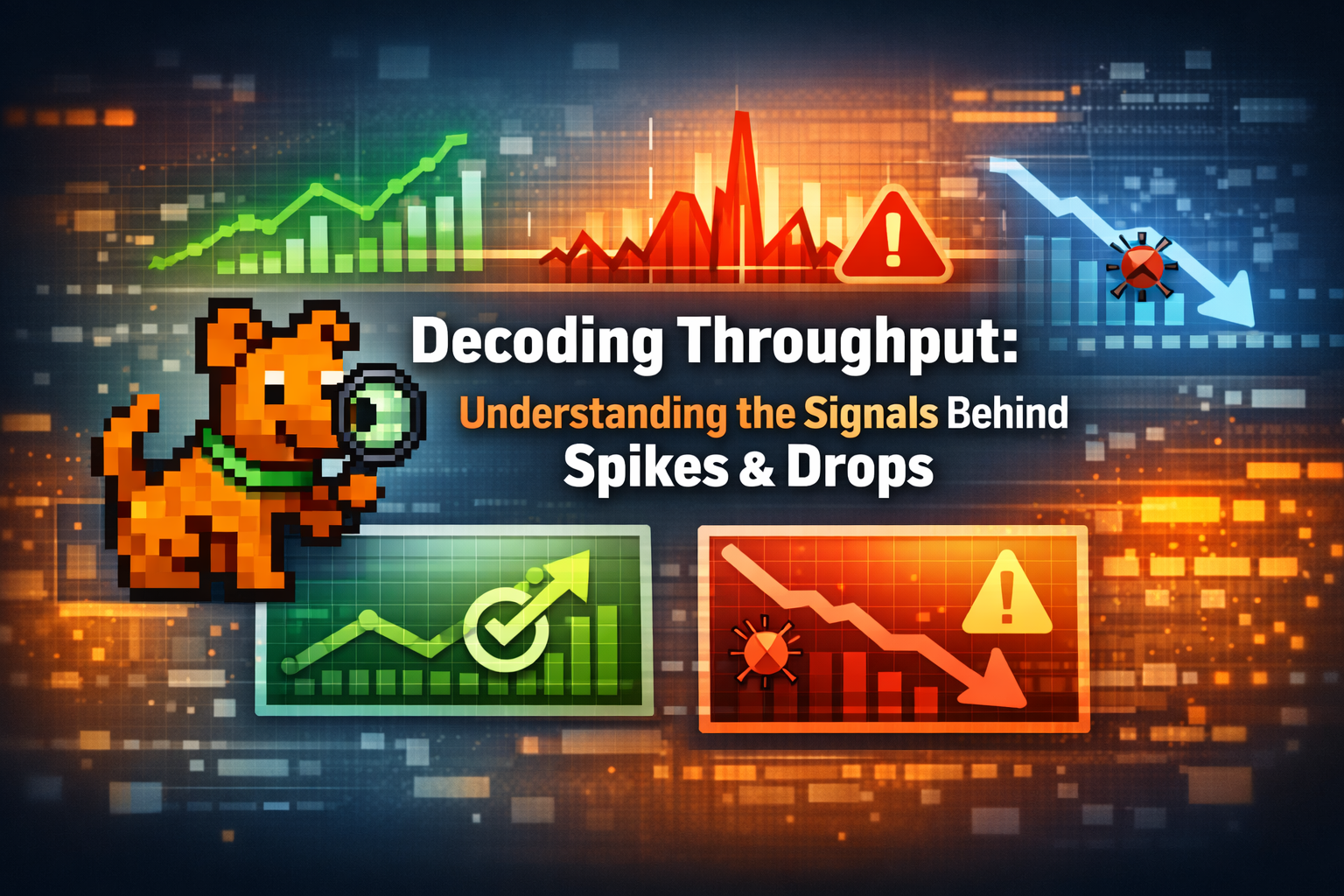Frontend monitoring is a process of tracking and maintaining the health of an application’s client-side. It involves monitoring the availability, functionality, and performance of the client-side of an application.
We can segment a web application into two parts. I.e., client-side and server-side. Frontend refers to the client-side (a presentation layer of an application) The client-side handles the presentation layer of an application, whereas the service side handles the business logic of an application.
In this guide, we will talk about the importance of monitoring the frontend of web applications. Feel free to use the following links to navigate the guide:
- Why is Frontend Monitoring Important?
- Best Practices of Frontend Monitoring
- Frontend Tools for Monitoring
- What About Backend Monitoring?
- Summary of Frontend Monitoring
Why is Frontend Monitoring Important?
To understand the importance of frontend monitoring, let’s use an analogy. Imagine that you’re running a restaurant; your restaurant has great food and a great ambiance. What if there is a truck standing in front of the restaurant or the waiters in the restaurant are serving the wrong orders to the people?
It will affect the business, right? Unfortunately, a similar situation can happen for the online business if no frontend monitoring is available for the application.
Modern web apps have become single-page applications, challenging the traditional approach. It has become vital to monitor single-page applications in the modern frontend world. Let’s discuss the Single Page Application(SPA) and how it differs from the traditional web applications?
What is SPA?
As the name refers, Single Page Applications(SPA) have a single page that renders the entire content for an application. The client-side uses frameworks such as React, Angular, or Vue to fetch the server's content and render the content on a single page. Every time a user interacts with the application, it re-renders the content on the same page.
In traditional applications, the client-side requests data from the server every time a user interacts with the application. In contrast, a single-page application fetches the data for the whole page at once and renders them, and it renders the dynamic page elements on the same page.
Best Practices of Frontend Monitoring
Even if you monitor the frontend of an application, it’s important to understand and follow the best practices of frontend monitoring. So, let's discuss some of the best practices of frontend monitoring.
Monitoring a single-page application differs from the traditional application. The conventional method of monitoring the frontend depends on the loading time of each page, so it takes a minimal amount of time to load the consecutive pages. Thus, the traditional method of frontend monitoring will not work efficiently for the single-page application. To monitor the SPA, we need to track API requests, page renders, application rendering life cycles, and more.
Tracking Dynamic Page Elements
As we discussed, a single-page application renders the content on a single page. It dynamically updates the page element by replacing the old content with the latest one. We can monitor single-page applications by tracking dynamic page elements.
It involves listening to route changes in the application. Every time a route changes, we can monitor the number of API calls. Usually, a route change when the user clicks a button (or) interacts with an application by doing any action. Monitoring a response time in SPA is a little trickier when compared with a traditional approach. When a user clicks a button, the application renders a new view. Modern frontend monitoring starts monitoring the application from user action to the complete render of the page. It helps to analyze the page response time in SPA. it collects metrics such as
- API response time for a particular page/view.
- The loading time of third-party scripts on a particular page, and more.
Synthetic Monitoring
Synthetic monitoring is a process of simulating user behavior in the application. It involves emulating the path (or) page visits the user might take in the application. Synthetic monitoring is also an important part of frontend monitoring.
It helps to detect issues before users report (or) face them. It may look simple, but detecting and fixing issues before users face them adds a lot of value to the business and help to gain customers’ trust.
It also helps collect and analyze valuable performance data and provides insights into the application performance bottleneck. So, integrating synthetic monitoring into the process is best for monitoring frontend applications.
Real User Monitoring
Real User Monitoring (RUM) is a process of monitoring the real user experience in the application. Synthetic monitoring simulates user behavior, whereas RUM monitors real user behavior. So we can say synthetic monitoring is active and RUM is passive.
RUM observes the system and alerts the team if there is an error or a bad user experience. We can also consider it as a defense system of the monitoring process. It helps to gain insights into the issues or performance bottlenecks by analyzing the metrics such as user environments, real-user behavior, the performance of third-party scripts, website performance, and business outcomes.
Frontend Tools for Monitoring
So far, we have discussed the best practices to follow for the frontend monitoring process. Next, let’s discuss some of the market's best frontend monitoring tools.
Scout
Scout is a renowned application performance monitoring tool. It provides a simple and intuitive dashboard that analyzes and gains detailed insight into the application performance.
It collects core metrics such as response time by category, throughput, error rate, memory bloat, and consumption to analyze the application performance and quickly overview how well the application performs. On top of that, Scout collects detailed transaction traces of web endpoint across the application that helps to identify the performance bottle.
Another great feature of Scout is alerting. Alerting the system keeps the team updated if there is any performance degradation or service crash. You can configure most of your notification channels to receive alerts via Scout.
AppSignal
AppSignal is application performance monitoring (APM) for Ruby, Elixir, and Nodejs. In addition, it provides error tracking for Javascript applications. AppSignal provides error tracking for frontend monitoring that helps trace errors on the client-side and alerts the team. It also provides a real-time alert when an error occurs.
AppSignal is a lightweight agent built with Rust. It collects CPU metrics, memory allocation, event timeline, and network information.
Sentry
Sentry is another competitive error and performance monitoring tool used by more than 80k organizations across 146 countries globally. One of the major features of the sentry is analyzing and providing insights into the events leading to the error. It helps to save debugging time and fix the issues.
You can visualize errors and build a custom dashboard with personalized metrics. While sentry covers frontend monitors, it lacks server-specific, application-level log integration and monitoring. But, it helps to analyze different transactions in depth.
LogRocket
LogRocket is a real user monitoring tool that records a user’s session and lets you play it back for debugging and fixing issues.
It provides developer mode to get insights into the resources the user loads on the client-side of an application. It also allows inspecting the logs, network activity, and DOM elements. LogRocket alerts the team via email (or) slack when integration. However, It has minimal control over an alerting system compared to other tools on the list.
Site24x7
Site24x7 is an availability and user experience monitoring solution. It also provides features like server monitoring and real-user monitoring.
Site 24x7 has a web section to monitor websites and APIs for frontend monitoring. It covers metrics such as response time, error rate, throughput, Apdex score, etc. It also provides a cloud-based solution for log monitoring that helps manage the logs of client-side and whole applications in a central location. It also collects metrics that help track exceptions, timeout, delays, etc.
What about Backend Monitoring?
Backend Monitoring involves monitoring the performance of infrastructure. It monitors the backend-specific components such as the HTTP server, middleware, database, third-party API, etc. Managing a whole infrastructure and monitoring each cluster’s health and infrastructure is the main responsibility of the backend monitoring system.
Compare and Contrast: Frontend and Backend
As we discussed, frontend monitoring involves monitoring the client-side of an application, for example, capturing and monitoring browser-based exceptions, a network API call to the server, etc. Frontend monitoring captures and analyzes that information and helps the developer identify and fix the issues.
On the other hand, Backend monitoring involves monitoring backend infrastructure. For example, it monitors the HTTP server, the health of the service, and the application's inter-service communication, etc.
Why Both Are Important
Monitoring the backend of an application has some benefits, such as
- It helps to monitor the application performance and its bottlenecks. It also helps to monitor memory bloat.
- It monitors server and infrastructure level issues—for example, CPU usage, Server limitations, etc.
When it comes to the benefits of frontend monitoring,
- It helps identify browser compatibility issues that can potentially affect the application flow.
- It also helps monitor network issues on the client-side of an application.
- Sometimes a particular issue can be location-based (or) user-specific. Frontend monitoring helps to identify those issues quickly.
Summary of Frontend Monitoring
Choosing the right tool for a job is essential, and it differs for everyone. Here are some use cases to consider when choosing a tool:
- Ease of use
- Options to provide multiple test locations
- Strong alerting system
- Integration with third-party and infrastructure monitoring
It is also important to understand that application performance monitoring is an ongoing process and not a one-time process. As a result, it takes time and effort to get the performance monitoring process right. In addition, monitoring a frontend requires special tooling to ensure the application performs well on the client-side.
With Scout APM, you get actionable insights from performance monitoring and error tracking under one dashboard. So, you can spend less time fixing bugs and more time building stuff. Get actionable insights into your application by getting started with a 14-days free trial (no credit card required) or schedule a demo with one of our experts today.









